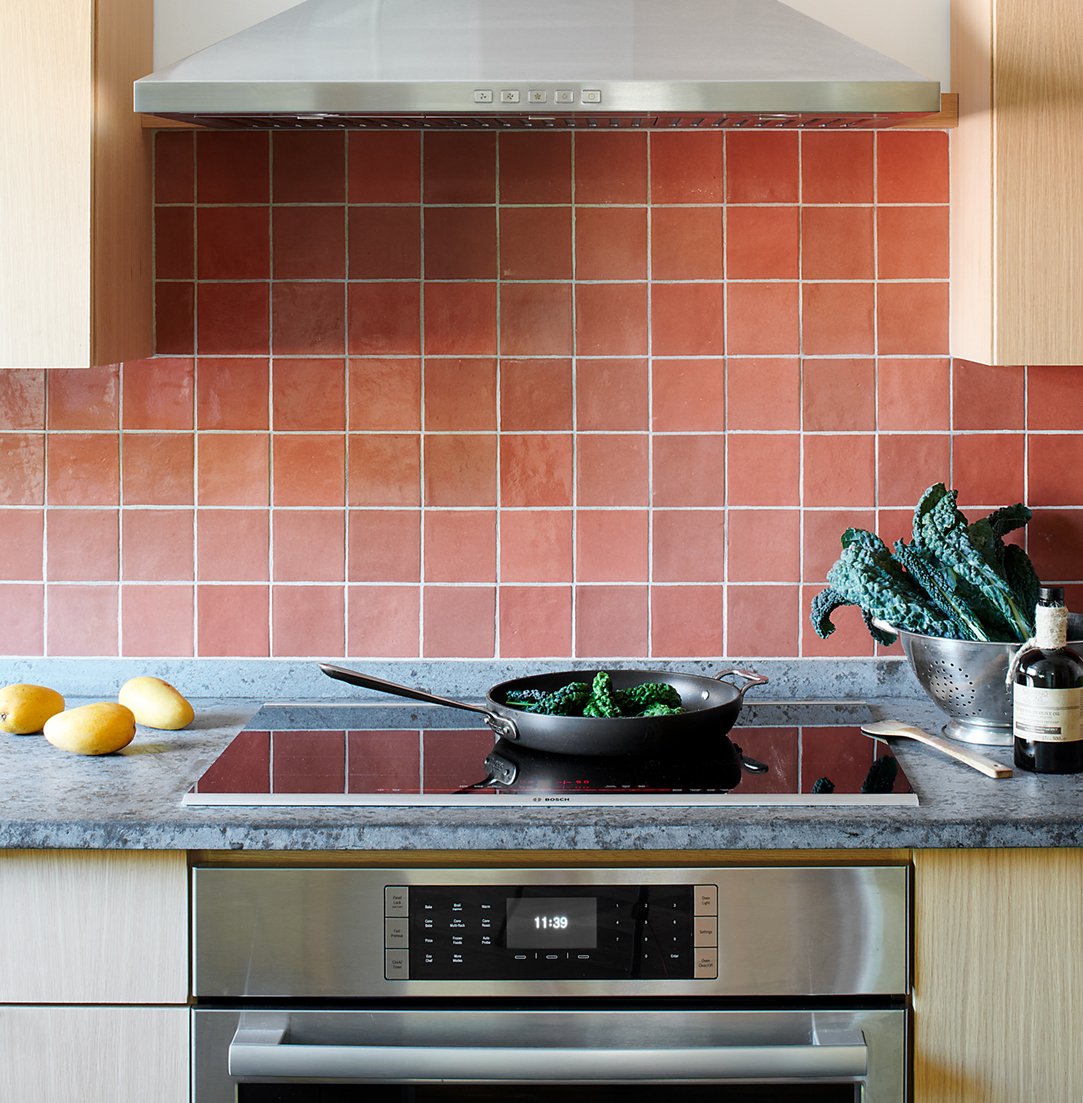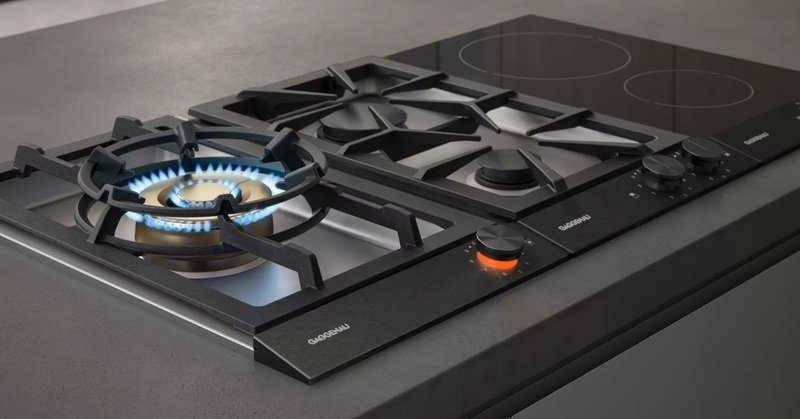Many of our customers want an eco friendly kitchen that is safe, efficient, and beautiful. When shopping for appliances we suggest they consider induction cooktops and ranges. Our Philadelphia kitchen designs are known for their historic charm, but when it comes to appliances we gravitate to newer technologies that are smarter, faster, and better for our environment. Does induction cooking perform better than gas? Is induction different than electric? In this post we will explain how induction cooking works, review the latest induction cooktop options, and find out if induction is the right choice for your kitchen.
How does induction cooking work?
While induction cooking technology has actually been around for several decades, it is only recently finding its way into American kitchen design. Induction is an electric based technology that heats using magnetic currents. These currents heat your cookware directly, unlike a gas stove that wastes a lot of heat with open flames. Older style electric cooktops heat a metal coil, which is slow to adjust. The magnetic currents of induction are fast to adjust and can be set at exact teperatures. In fact, when we tested our gas range vs. induction cooktop by boiling a pot of water, the induction was faster by four minutes!
This Thermador ‘Freedom’ cooktop senses pans and moves the heat source when you move the pan.
Will my pots and pans work with an induction range?
Try the magnet test. The best way to find out if your pots and pans will work is to use a small magnet. If it sticks to your pans you’re good to go. Cast iron, steel, and most stainless steel pans will work with induction. Aluminum, copper, and glass will not. Some aluminum and non-stick pans are made with a magnetic metal base so that they will work with induction. Look for an ‘induction ready’ label on any new purchases. Induction may cause a gentle shaking with pans, so heavy lids are best to stop rattling. Our favorite brands to use on the induction range are Le Cruset and All Clad.
Gas ranges create excess heat and need stronger ventilation. See more of this kitchen here.
Is induction cooking better for the environment?
For decades the natural gas industry has been promoting gas cooking for its ease of adjusting temperature and even cooking. No one likes to talk about the air pollution gas cooking causes inside your home and outside in the air we all breath. Induction cooking offers the same speed and even cooking surface, but removes the air pollution. Less energy is used, less time is spent cooking, and less ambient heat is created with induction. Because of this, induction cooktops require less powerful ventilation hoods - another energy saving component!
Are Induction cooktops safer than gas or electric? Are they easier to clean?
Induction cooktops use magnetic currents that only heat the correct cookware. That means a burner that is left on will start to cool as soon as the pan is removed. Induction cooking is less likely to burn people, pets, and that plastic container you accidentally set on the range. Some people even put thin silicon pads down between the burner and pot to catch spills and splashes. Similar to electric cooktops, induction has a smooth glass top that is easy to clean and provides a sleek look. Quick temperature control means less boiling over and burning food. Our interior designers always consider cleanability when choosing kitchen appliances and induction cooktops are a favorite.
A Bosch induction range with electric oven.
What about electric ovens? Are they better than gas?
Most bakers agree that electric ovens are preferred for their even temperatures. Electric ovens can maintain an even heat while gas ovens have to turn on and off to keep a consistent temperature. That’s why many appliance manufacturers offer ‘dual fuel’ which means a gas range with an electric oven. Induction ranges have the same ovens as electric and dual fuel ranges.
This Gaggenau cooktop combines gas and induction burners.
What are the best induction cooktops?
Currently there are a lot of options and price ranges for induction cooking. At the top, brands like Wolf and Gaggenau offer fully induction units along with combined units that offer gas and induction. Our favorite cooktop is this Thermador that senses the pots you are using and creates a new burner anywhere on the unit, sized to fit the pot. That means you can move your pot around and the cooktop heats wherever you need it. Some less expensive brands include the Bosch induction range and Frigidare cooktops. When shopping, consider whether you’re comfortable using a touch screen to cook or if you prefer knobs to control heat.
What are the cons to induction cooking?
Most induction cooktops and ranges are more expensive than standard gas equivalents. If your home is already plumbed for gas, a new induction unit will need new dedicated wiring. Some pots and pans may not work with induction, so that could be an additional cost to factor. Visually, induction cooktops are sleek and simple, but some home owners want the vintage look of a gas stove. While most cooks get used to induction within a few days, there is a learning curve. Some people miss the glow of the open flame.
A sleek cooktop in a classic white kitchen.
Is induction the right choice for me?
It’s currently legal to use natural gas appliances in Philadelphia kitchens. However, more and more cities across the USA are banning them. If electric is your only option, then induction is far superior to typical electric ranges. In many Philadelphia row homes it can be difficult or impossible to vent hoods to the exterior. If good ventilation is not an option then induction is a good solution. Finally, some homeowners want the sleek look and easy cleanability of an electic cooktop. We recommend closing appliances based on ease of use, not just looks. Our interior design team loves to create simple classic kitchens with efficient and eco friendly appliances.
For more opinions on induction technology, we enjoyed these articles from the New York Times and Consumer Reports.






